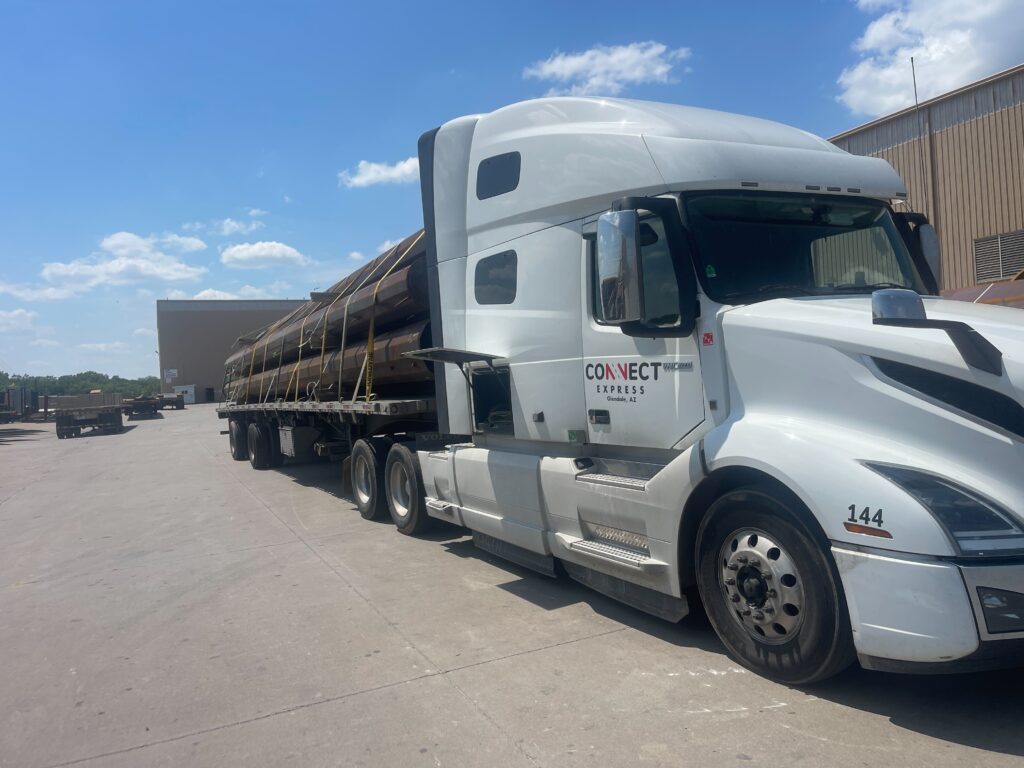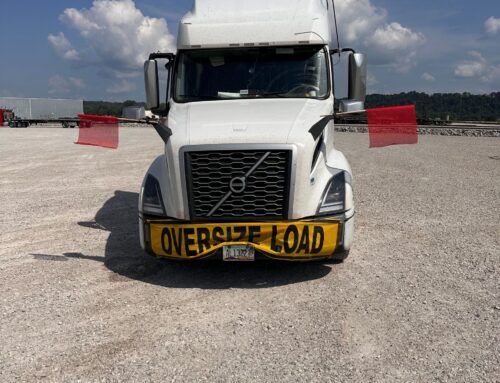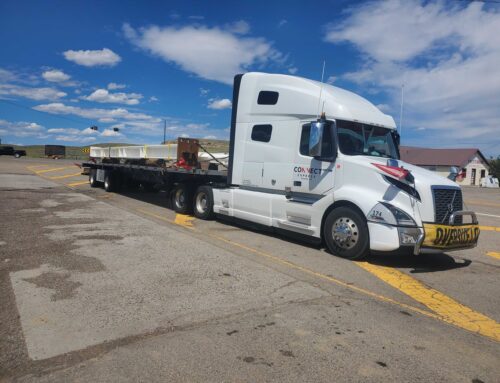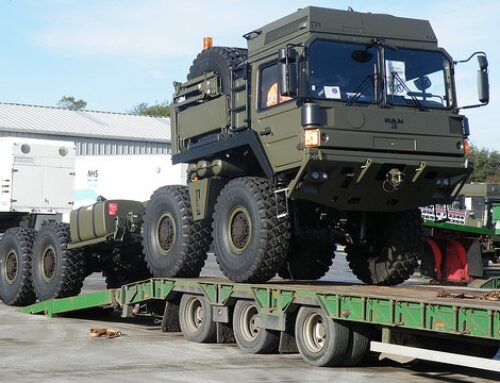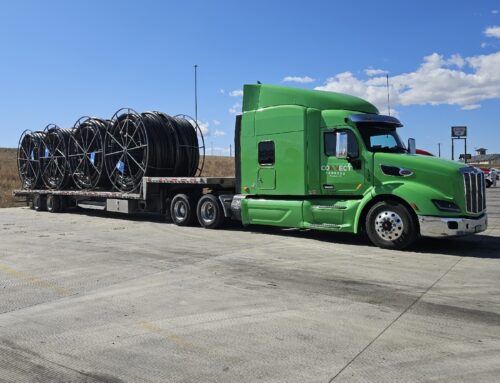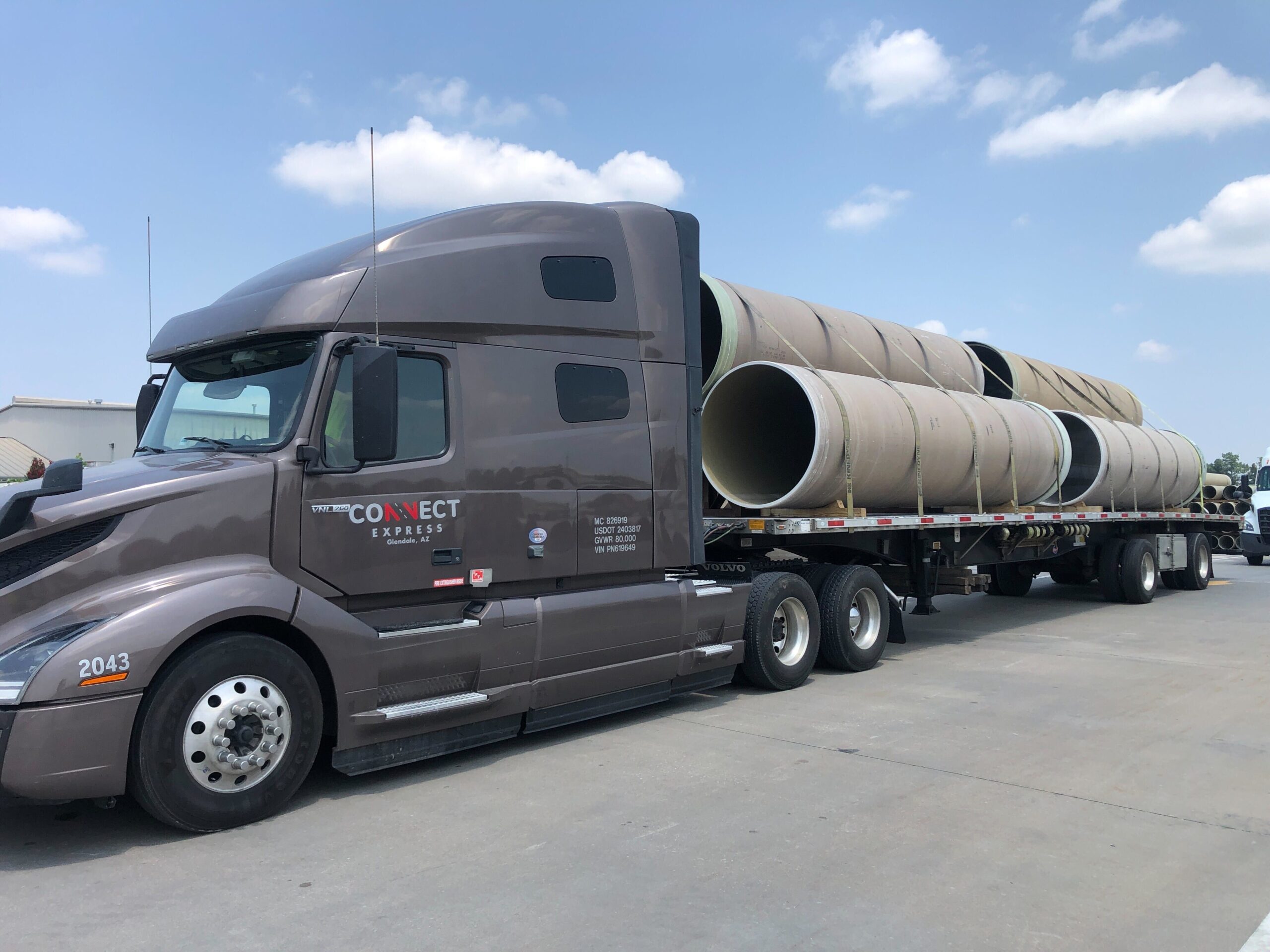
The Future of Fleet Management Software for Business Success
Table Of Contents:
- The Best Fleet Management Software for Your Business
- Key Takeaways
- Defining Your Business Needs for Optimal Fleet Software Selection
- Core Features of Effective Fleet Management Software Solutions
- Evaluating Top Fleet Management Software Providers for Your Company
- Successfully Implementing Your Chosen Fleet Management Software Solution
- Maximizing Return on Investment With Your Fleet Management Software
- Anticipating Future Developments in Fleet Management Software Solutions
- Final Thoughts
- Frequently Asked Questions
The Best Fleet Management Software for Your Business
Key Takeaways
- Effective fleet management software begins with a thorough assessment of your business needs and operations, ensuring the selected solution aligns with your fleet size, pain points, and budget.
- Core features such as real-time GPS tracking, maintenance scheduling, and driver behavior monitoring enhance safety, efficiency, and regulatory compliance.
- Evaluating providers through scalability, user interface design, integration capabilities, and pricing structures ensures a smooth deployment and long-term ROI.
- Future developments like AI integration, EV management, and enhanced data security will continue to shape fleet software innovations.
Defining Your Business Needs for Optimal Fleet Software Selection
A successful implementation of fleet management software starts with a precise understanding of your business needs. The first step is to assess your current fleet size and operational scope. Companies with a diverse range of vehicles and varying operational demands must quantify not only the number of assets but also the specific functions each vehicle performs. By evaluating whether you operate a single truck fleet or manage hundreds of vehicles, you can determine the scalability and complexity required from a fleet management solution.
Assessing your current fleet size helps in benchmarking current performance levels and identifying the areas where improvements are needed. Additionally, businesses need to scrutinize their logistical challenges such as tracking vehicle locations in real time, scheduling maintenance, and monitoring fueling habits. With these insights, you can then identify key pain points in your existing fleet operations. For example, if your company is experiencing frequent downtime due to unplanned maintenance or high fuel costs owing to inefficient routing, these issues signal the need for robust monitoring and reporting features in the software.
Once you have established where the inefficiencies lie, the next step is establishing clear objectives for your fleet management software solutions. This should include specific targets such as reducing fuel expenses by a certain percentage, improving driver safety scores, or enhancing regulatory compliance through automated reporting. Coupled with clear objectives, setting a realistic budget for the fleet software investment is critical. Budget considerations must reflect not only the upfront costs of the software but also ongoing investments such as subscription fees, updates, and training costs. Bringing these considerations together ensures that the software you select is aligned with your business size, operational needs, and financial capacity, setting the stage for a successful transformation in fleet management.
Core Features of Effective Fleet Management Software Solutions
When selecting fleet management software, it is essential to focus on the core features that will drive value for your business operations. One of the most critical components is real-time GPS vehicle tracking and geofencing capabilities. These features enable fleet managers to monitor the precise location of every vehicle in real time, helping to optimize routes, streamline dispatch processes, and quickly respond to unexpected deviations. Geofencing allows you to set boundaries for vehicle operations and sends alerts if a vehicle strays from its designated area, enhancing security and operational control.
Another core feature is comprehensive maintenance scheduling and automated reminders. Regular maintenance is vital for fleet health, reducing unplanned downtime, and minimizing repair costs. With the right software, maintenance tasks are automatically scheduled based on usage, mileage, and pre-set intervals, ensuring that vehicles are serviced at optimal times. This not only prolongs vehicle lifespan but also improves safety and reliability on the road.
Fuel usage monitoring and cost optimization tools play an equally important role. By tracking fuel consumption and correlating it with driving patterns, fleet managers can identify inefficiencies and implement cost-saving measures. These tools provide detailed reports, enabling a data-driven approach to managing fuel expenses and reducing waste. Similarly, driver behavior monitoring and safety improvement metrics are integral. Advanced software can track and report on driving habits—such as harsh braking, rapid acceleration, and idle times—alerting managers to potential safety risks and opportunities for driver training. In turn, this helps in mitigating accidents and lowers insurance premiums over time.
Furthermore, regulatory compliance and automated reporting functions are indispensable features. The software should help ensure adherence to a myriad of transportation regulations by generating accurate, customizable reports and maintaining updated records for audits. Overall, these comprehensive features work together to provide fleet managers with the operational visibility, cost control, and safety improvements necessary for a streamlined fleet operation.
Evaluating Top Fleet Management Software Providers for Your Company
Evaluating fleet management software providers is a multi-faceted process that requires a careful comparison across several critical dimensions. One of the foremost criteria is comparing software scalability for future business growth. A scalable solution is designed to grow with your business, handling increased data loads, vehicle numbers, and complex operational requirements as your fleet expands. This capability ensures that your investment remains viable for years to come without requiring frequent replacements or costly upgrades.
Another key evaluation point is reviewing user interface ease of use and mobile accessibility. A well-designed software interface minimizes the learning curve and enhances daily operational efficiency. In today’s fast-paced environments, mobile accessibility is crucial because fleet managers and drivers alike need to access information on the go via smartphones or tablets. An intuitive interface that offers real-time updates and straightforward navigation enhances productivity across teams, ensuring critical functionalities like route planning and maintenance alerts are always at hand.
Integrating with existing business systems is another essential factor. Investigating integration capabilities ensures that the new fleet management system can seamlessly exchange data with your current ERP, accounting, and logistics platforms. This reduces manual data entry, minimizes errors, and provides a unified view of all business operations. Equally important is assessing vendor support and customer service reputation. Reliable customer support can be a key differentiator, ensuring that technical or operational issues are promptly addressed, minimizing disruptions.
Finally, analyzing pricing structures and contract terms is critical for making a cost-effective decision. Transparent and flexible pricing models—whether subscription-based or one-time investments—help you understand the total cost of ownership. Contract terms, including service level agreements and upgrade provisions, should be thoroughly reviewed to avoid unexpected financial burdens. By weighing these dimensions, businesses can select a provider that not only meets immediate needs but also supports long-term growth and operational efficiency.
Successfully Implementing Your Chosen Fleet Management Software Solution
Implementing fleet management software demands careful planning and coordination to ensure a smooth transition and timely adoption across the organization. The initial stage involves planning data migration and system configuration. This critical step requires mapping existing data within your legacy systems to the new software’s structure. Ensuring high-quality data migration minimizes errors and avoids operational hiccups post-implementation. Detailed attention is paid to the configuration of key system parameters so that the solution settles seamlessly into the operational framework of your business.
Developing a comprehensive training program for your team is vital to maximizing the software’s effectiveness. Training sessions should be structured to cater to different user roles—from fleet managers to drivers—to ensure that everyone understands how to utilize the various features. Effective training not only improves user adoption rates but also reduces resistance during the transition period. It is essential that the training is ongoing, enabling users to stay updated on new functionalities and best practices.
In addition, establishing key performance indicators (KPIs) for post-implementation monitoring is a strategic move to measure the software’s impact on your operations. KPIs such as reduced fuel consumption, improved vehicle uptime, and better driver behavior metrics provide tangible evidence of returns on investment. Regular performance reviews help in identifying any shortfalls and pave the way for incremental improvements.
Managing the transition and encouraging user adoption are equally important. A phased approach, where the software is first rolled out in one segment of the fleet before a company-wide deployment, can mitigate risks and allow for iterative improvements. Securing executive buy-in for smooth software deployment is also essential. Executive support provides the necessary resources and reinforces the importance of the software transformation throughout the organization. This helps in ensuring that all stakeholders are aligned with the strategic goal of enhancing operational efficiency via advanced fleet management software.
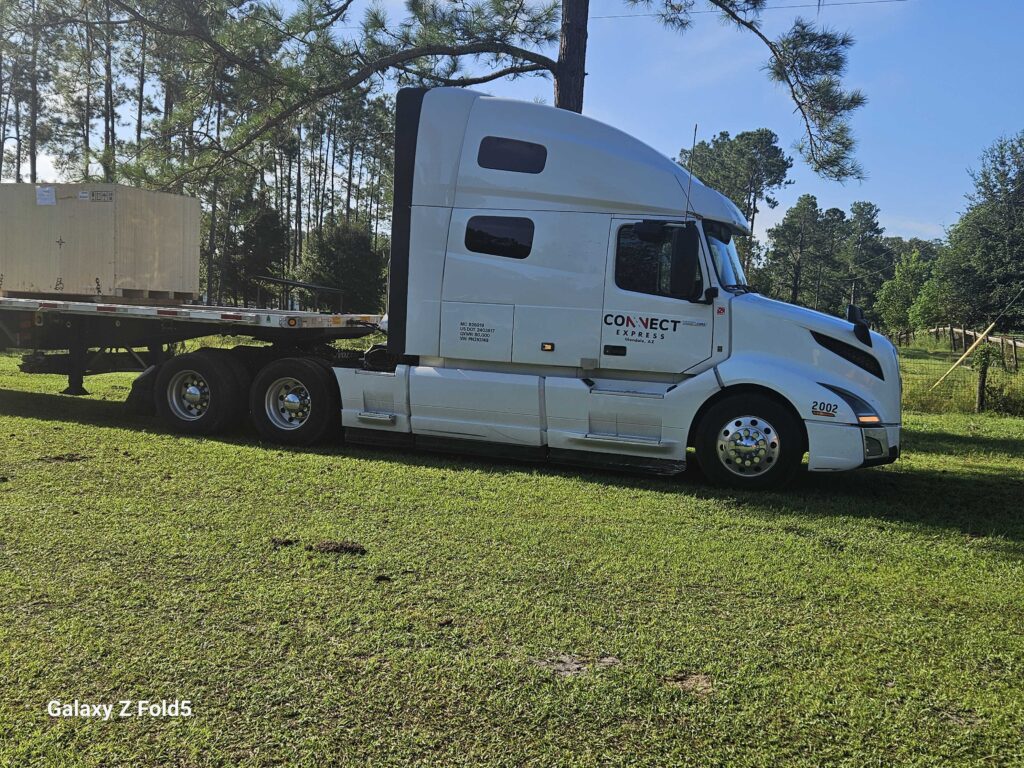
Dedicated Transportation
Maximizing Return on Investment With Your Fleet Management Software
To maximize return on investment (ROI) from fleet management software, businesses must leverage data analytics for informed decision-making. Data gathered from vehicle telemetry, driver behavior, and maintenance records can yield powerful insights when analyzed effectively. These analytics guide decision-making by highlighting inefficiencies, pinpointing cost centers, and identifying opportunities for process optimization. With actionable data at hand, fleet managers can adjust routes, schedules, and maintenance protocols to enhance overall efficiency.
Identifying areas for cost reduction through software insights is another critical factor in maximizing ROI. For instance, by monitoring fuel usage and driver behavior, companies can reduce overhead costs associated with fuel wastage and accident-related expenses. Additionally, predictive analytics may uncover patterns that suggest fewer maintenance needs or reduced repair severity, thereby cutting unexpected operational costs.
Improving vehicle lifespan and utilization is a key aspect of ROI enhancement. With proper monitoring, preventative maintenance programs can be fine-tuned to ensure vehicles are not overused or prematurely retired. From a financial perspective, prolonging the useful life of your fleet assets directly translates to reduced capital replacement costs and improved return on each asset.
Enhancing overall operational efficiency and productivity through the software is a multifaceted process. Streamlined communication between dispatchers, drivers, and maintenance teams ensures that information flows seamlessly, reducing downtime and enhancing responsiveness. In doing so, the business can track key metrics to demonstrate software value. These metrics often include improvements in on-time delivery rates, lower incident rates, increased vehicle utilization percentages, and overall better service profitability. Such comprehensive monitoring underscores the financial benefits and operational advantages, thereby confirming the strategic value of investing in advanced fleet management software.
Anticipating Future Developments in Fleet Management Software Solutions
As the transportation industry evolves, fleet management software is set to experience transformative advancements. One of the most prominent developments is the rise of AI and automation in fleet operations. Artificial intelligence enables predictive analytics, dynamic routing, and automated maintenance scheduling, which collectively streamline operations while reducing human error. Automation, coupled with machine learning, means that fleet managers can rely on real-time data processing to make instantaneous decisions that optimize routes and minimize operational costs.
Another emerging trend is the increasing integration of electric vehicle (EV) management features. As fleets begin to incorporate electric vehicles, specialized modules for monitoring battery health, charging cycles, and energy consumption become essential. Forward-thinking fleet management solutions are already adapting to address these needs, ensuring that companies can transition to EVs with minimal disruption while capitalizing on lower operating costs and a reduced environmental footprint.
Advances in predictive maintenance technologies are also on the horizon. New sensor technologies and real-time IoT devices are enabling proactive diagnostics, which allow for repair interventions before a critical failure occurs. This approach not only enhances vehicle reliability but also significantly reduces maintenance costs and unplanned downtime. Moreover, enhanced data security measures for fleet systems are receiving growing attention. With increasing cyber threats, future fleet management solutions must incorporate robust cybersecurity protocols to protect sensitive data and operational integrity.
Finally, there is a growing emphasis on sustainability and emissions tracking. As regulatory frameworks tighten around environmental impact, software solutions are incorporating features to monitor emissions and ensure compliance with new sustainability standards. This integration not only aids in meeting regulatory requirements but also appeals to a market that values eco-friendly practices. Overall, these future-oriented developments will further solidify the role of fleet management software as an indispensable tool for operational efficiency and regulatory compliance.
Final Thoughts
Fleet management software is a critical investment that transforms how transportation businesses operate by integrating real-time tracking, maintenance scheduling, cost optimization, and compliance management. By assessing business needs, evaluating providers meticulously, executing a well-planned implementation, and focusing on ROI, businesses can achieve significant operational enhancements. Looking toward the future, ongoing innovations such as AI integration and EV management will continue to drive industry evolution. Embracing these technologies today will position companies to remain competitive and efficient in an increasingly complex transportation landscape.
Frequently Asked Questions
Q: How do I determine the right fleet management software for my business? A: Begin by evaluating your fleet size, current operational challenges, and budget. Consider software features like real-time tracking, maintenance scheduling, and fuel management, then choose a solution that scales with your growth.
Q: What core features should I prioritize in fleet management software? A: Key features include real-time GPS tracking, automated maintenance reminders, fuel usage monitoring, driver behavior analysis, and regulatory reporting functions. These features help enhance safety, efficiency, and cost reduction.
Q: How can data analytics improve fleet operations? A: Data analytics allow fleet managers to make informed decisions by monitoring vehicle performance, fuel consumption, and maintenance trends. This results in optimized routing, reduced downtime, and lower operational costs.
Q: What should I consider when evaluating fleet management software providers? A: Evaluate providers on scalability, ease of use, integration capabilities, customer support, and pricing structures. A thorough comparison ensures that the selected software meets both current and future business requirements.
Q: What future trends should I expect in fleet management software? A: Future trends include increased AI and automation integration, specialized EV management features, advanced predictive maintenance technologies, enhanced data security, and improved sustainability tracking—all aimed at optimizing fleet efficiency and regulatory compliance.

